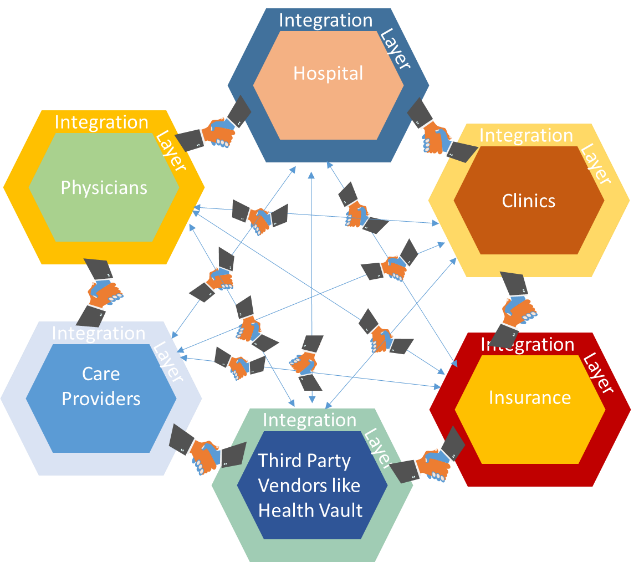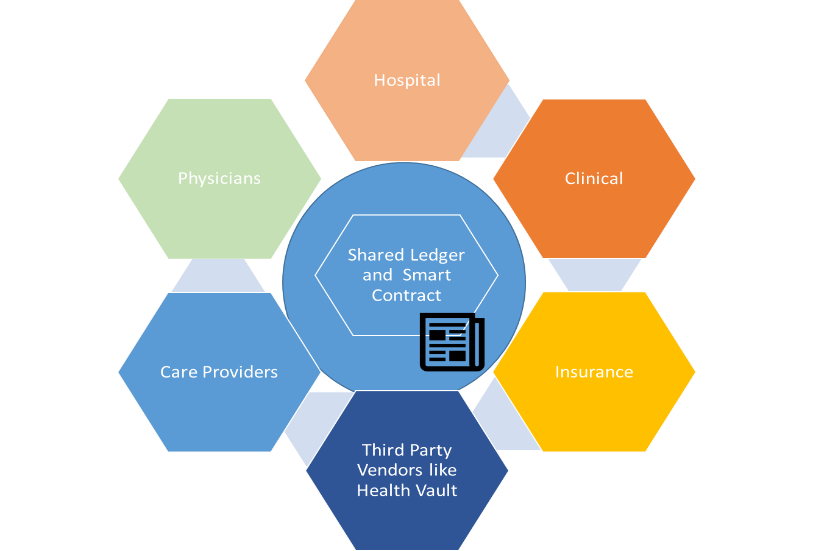Healthcare Industry has spent billions on data interoperability – to exchange healthcare data between disparate systems to support care coordination, population health management initiatives and most importantly to stay HIPAA compliant to support meaningful use of data and protect the privacy of individuals. Some of the important Healthcare Statistics across the web state that:
- It costs nearly $250 billion to process 30 billion healthcare transactions each year
- 86% mistake made in Healthcare are administrative
- 3 of every ten tests are re-ordered because the results are not found
- Patient charts are not found on 30% of visits
- About 80% of all serious medical errors involve miscommunication during care transitions (to different care settings).
While the Healthcare providers maintain the Electronic Medical Records (EMR), the Personal Health Record (PHR) is maintained by third-party vendors or individuals/patients themselves. It contains personal health records of the patients including hypertension and diabetes checks performed by them at home. At times they are also integrated with solutions such as GoogleVault, HealthVault, AppleVault to support self-care management and regular monitoring by health coaches online.
Every month tens of millions of dollars are spent to perform, facilitate and monitor such data exchanges between legacy systems, latest EMR/PMS systems, and care management applications. Real-time data exchange promoted by HL7.Org through FHIR protocol is still evolving with adoption rate next to negligible.
To summarize the challenges
- Patients need to have control over their data (privacy protection) and seamless access to their medical information
- Healthcare service providers and Healthcare insurance need to have seamless access to billing and sometimes sensitive data of patients
Would a solution where patients have all their medical and associated billing records with themselves help? Should all the service providers trust this solution? Would this solution ensure traceability of data? Would this ensure that the patients and the service provider have the same record?
Proposed Solution
In today’s world, all systems are disparate, and any integration is usually additional effort. In many cases, the integration is manual and in some instances, there are physical documents then the combination involves additional effort (transcribing, translation, etc.)

When the data is available electronically, each System has its own Integration Layer to communicate with another System, and in all cases, data has to be mapped or transformed (as the case maybe) and routed appropriately between the two systems.
Would this process be easier, if there was a shared ledger? And, there is a common agreement between the participating systems on what gets written into the shared ledger.

If we decentralize the ownership of the key data set and move it to a shared ledger with the smart contract (permission based sharing) which Blockchain would provide and create a health record that is Patient-Centric, it will help in the eliminating the Integrated system and ensure data privacy. The relevant health and billing records from the Shared ledger can be shared with relevant stakeholders as and when the owner of the data decides to share it, and can only be updated by consensus of participants involved, information in the shared ledger can never be deleted. This could potentially be the Health Wallet owned by the Patients and shared only based on needs and permissions granted.
Features of a Health Wallet:
- Block Chain contains the complete health and billing history of the patient
- The transaction is updated into the Block Chain only when there is consensus between the parties involved, and there is no option to update a previously written record
- Patients permit the stakeholder to access the historical data, which is always in read-only mode; Patients will always know who had access to their data.
Benefits
- Comprehensive and trusted view of the Patient record
- Could avoid any new integration system to be created to communicate to different systems
- Administrative task and claims can be made easier
Please note: This blog is part of a series of Blockchain articles. Through these articles we explore about Blockchain – The technology, the hype, the opportunity, the do’s and the don’ts.

Shubha is a former Happiest Mind and this content was created and published during her tenure.



